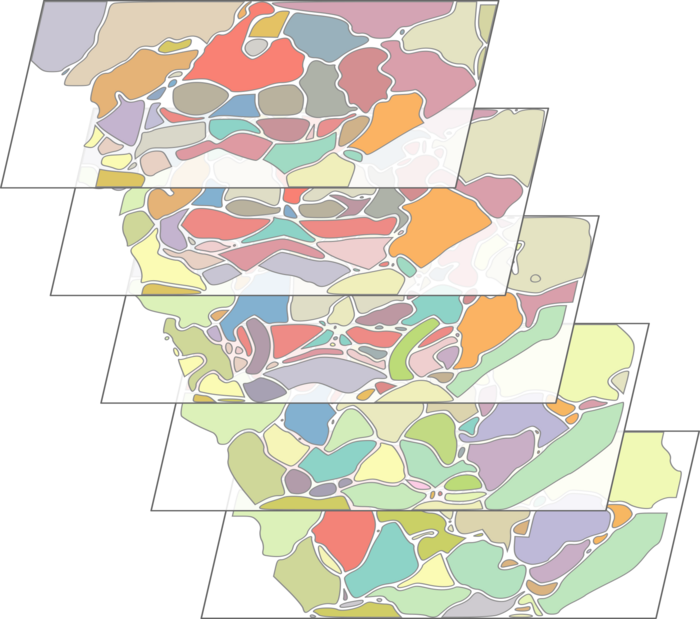The prevailing belief is that the body often needs protein so only after that is obtained are carbohydrates 'craved', to add to the body’s fat stores. Yet it is not so simple and a new study combines effects to see how the brain's parallel internal states guide behavior.
An obvious example is being pregnant. 'Pregnancy brain' is real, so to investigate how internal states shape behavior, the team focused on a relatively poorly understood region of the fruit-fly brain called SEZ (the subesophageal zone). This region is thought to play a crucial role in food choice because it receives the majority of taste inputs and houses the motor neurons that control feeding. However, since this region mainly consists of densely tangled neural fibers, its anatomical sub-structure was not well-defined.
To understand how it operates, they decided to create a “functional atlas” of the SEZ. In other words, they set out to identify the sub-structures that make up this region and attribute specific functions to each. To that end, Daniel Münch, the study's lead author, first expressed a fluorescent activity reporter in all neurons in the fly brain. He then performed advanced 3D neuroimaging in four groups of flies, each representing distinct internal states.
"We wanted to understand how two powerful protein-appetite modulators -- protein deprivation and reproductive status -- interact in the brain. We, therefore, defined four experimental groups: fully-fed virgins, protein-deprived virgins, fully-fed mated flies, and protein-deprived mated flies. We recorded neural activity in the SEZ while the flies tasted sucrose, water and yeast (the fly's natural protein source)," Münch explained.
The Appetite Map Of The Brain
The atlas the team created consists of 81 regions spanning the entire SEZ. These regions correspond to the majority of the SEZ’s previously described sensory and motor areas, and also include new, previously unidentified regions.

Key neurons controlling protein craving during pregnancy and under nutritional restriction in fruit flies. Credit: Ribeiro lab, Champalimaud Foundation.
"Our atlas captured some known regions. For example one shaped like a banana, which receives input from taste neurons that are located in the proboscis (the fly's mouth)," said Münch. "We also discovered a winged-shaped area we named the Borboleta region (the Portuguese word for butterfly) in the back part of SEZ. This region later turned out to play a key role in driving protein appetite."
Beyond identifying new regions, the atlas also revealed the effect of internal state on neural activity, pinpointing the “Borboleta region” as a protein-appetite driver. Responses to water and sucrose hardly changed across the four groups. However, protein-rich food had a striking effect.
"Protein-rich food evoked activity was strongly increased across large parts of the SEZ in protein-deprived animals. Mating however, mostly affected activity in the SEZ's motor regions. This was somewhat surprising, as mating and protein deprivation are both known to increase protein appetite, and so we didn’t expect to find such different response patterns," Münch said.
They also witnessed the synergistic effect that combined internal states have on neural activity. "Mated, protein-deprived females had the highest activity in the SEZ’s motor regions," Münch explained. "This means that even though this pair of co-existing internal states-- protein-deprivation and pregnancy -- are processed across distinct neural circuits, they end up converging at the same area to promote protein appetite."
Manipulating neurons to induce protein cravings
The team identified new regions in the SEZ and witnessed how different tastes and internal states influence neural activity in these regions. But how could they know whether these areas are actually involved in driving food preference?
"That's when we turned to our newly-discovered borboleta region, where protein taste evoked robust neural activity," said Münch. “We reasoned that if it is truly involved in this behavior, we could influence protein appetite by artificially activating neurons in this region."
The team aligned the atlas they created with another pre-existing atlas that maps the innervation patterns of groups of neurons. They then selected neurons in the borboleta region and activated them in fully-fed flies, who normally prefer sucrose over protein. This manipulation resulted in a marked increase in protein appetite.
"We felt that we had come full circle: from observation to function," Münch recalled. "First, we observed food preference in the four groups of flies, noting that protein-deprived and mated flies have a high preference for protein. Then, we imaged neural activity in the SEZ, created the atlas, and identified new regions. Finally, we confirmed that one of these regions is involved in generating the behavior we had initially observed by manipulating its activity.”





Comments